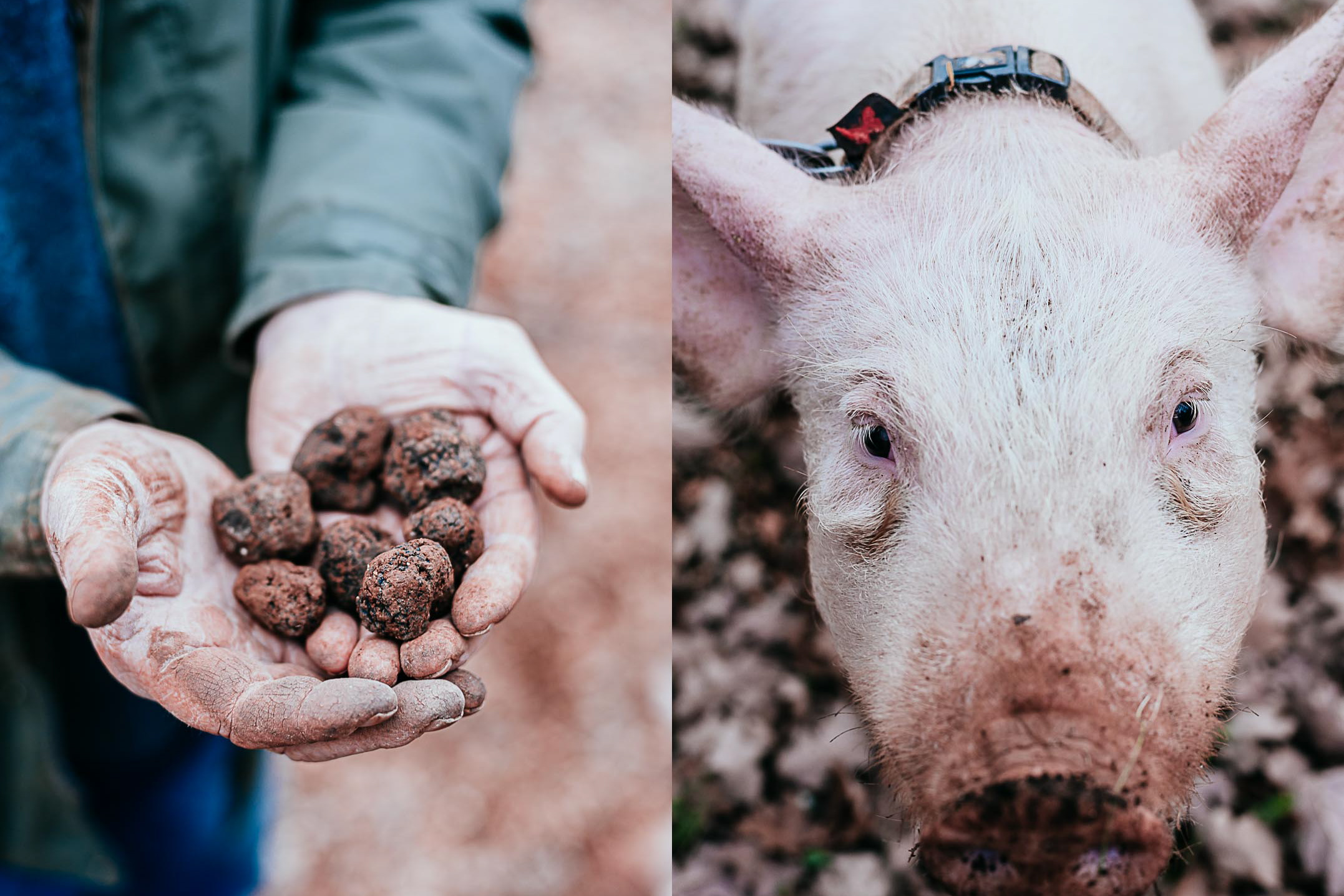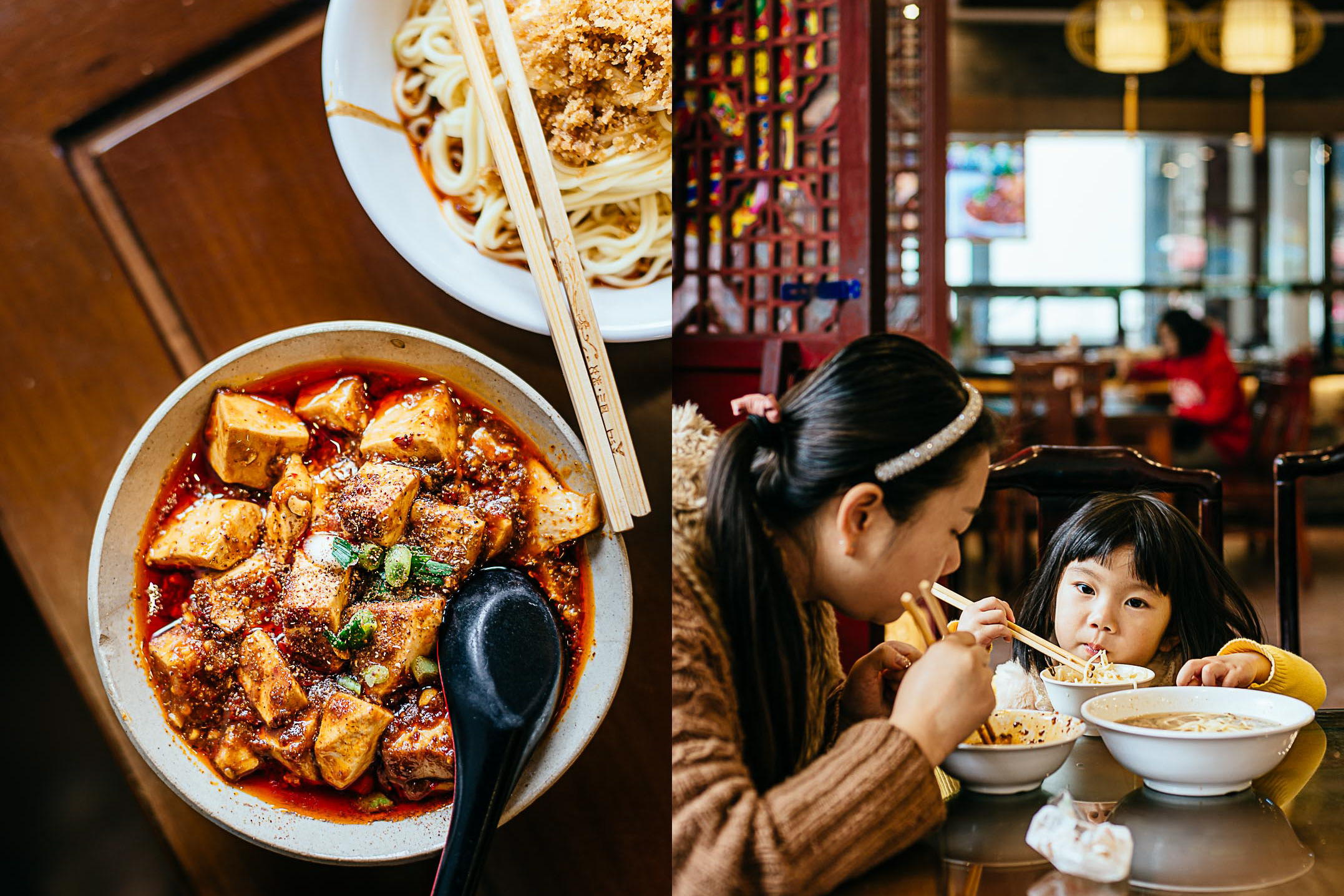JEONJU
village people
village people
There’s a busy crossroads in old Jeonju. Like the big ‘X’ on a treasure map the junction marks the heart of the city’s ‘hanok village’ … and a not-so-secret spot to start discovering its culinary gems.
Located in the southeast corner of the North Jeolla provincial capital, the ‘village’ embraces 700 or more century-old cottage-like hanok dwellings. Whilst a defiant few are still private (and highly desirable) residences, many of the sometimes humble, sometimes extensive hanok have been repurposed as crafts stores and homestays, bike rentals and a number of noteworthy restaurants. They cater to daytrippers and staycationers (some 10 million annually) who at the end of the afternoon invariably find themselves at this crossroads.
That’s when the sun drives straight along Taejo-ro avenue, the tree-lined east–west axis of the junction. Its golden light glints around sightseers queuing at take-out counters and window-shoppers nibbling on spicy beef skewers, crisp-fried chicken wings, kimchi-stuffed nuggets …
The same end-of-day sun casts its light across the swoop-gabled roofs of the old town (called a maeul by Koreans) and finds its way along twisting lanes, eventually getting lost in hidden courtyards and tidy gardens.
Perhaps the most seductive of these backlanes are in the northeast quarter of the village. Snickets that zigzag between hanoks, they are lined by stone walls, some of which are half-height allowing glimpses into backyards. Typical of many a Korean home (and some small restaurants) these simple spaces are an extension of the kitchen: a larder of sorts where foundational ingredients are stored in earthenware fermenting jars. Three, five or more of the waist-high onggi (often stood in the shade of the dwelling or trees and shrubs) are commonplace, and they contain amber-hued doenjang soybean paste, chilli-specked kimchi, or maturing soy sauce. Ingredients found at every meal, either as small side dishes (called banchan) or at the very soul of hearty soups and fried rice.
Across the maeul, Hankook-jib restaurant is so popular that it cannot accommodate sufficient onggi pots in its attractive courtyard garden. Supplies are brought in daily to satisfy the cravings of myriad diners who come for the three types of bibimbap. The restaurant has been turning out a definitive bowl of the Jeonju version since 1952, made memorable by its local-style namul toppings including ginkgo nuts (don’t eat too many!) and a gummy mung bean jelly called hwang pomuk, which sit alongside regular accompaniments like spinach and raw egg.
Bibimbap translates as ‘mixed rice’ and though Hankook-jib’s bowl comes out looking like the crown jewels on a pillow of beef-broth-boiled rice, the precious display must be ruthlessly mixed into a murky but comforting mishmash. If the archetypical British broken meringue-and-cream dessert ‘Eton mess’ is so named, then think of bibimbap as the ‘Jeonju mess’.
Gen Z daytrippers, who take the two-hour fast train from Seoul, may not find the time to queue for lunch as they scoot about town on PTs (personal transporters). They selfie and shop and snack their way through the village, stopping off at Gilgeoriya for its twenty-first century streetfood takes on classic bowl-and-chopsticks dishes: think grilled-beef bulgogi croquettes or bibimbap-stuffed French sticks.
The hanok village stretches a few blocks in each direction from the central junction to form a square-kilometre old town. Adjacent to the crossroads, leafy Gyeonggijeon Shrine was built in 1410 as the repository for a treasured portrait of Seong-gye Yi, architect of the all-powerful Joseon Dynasty which ruled for 500 years. He was born in the north of the peninsula but he declared Jeonju the family’s ancestral home.
Perhaps he admired the Jeolla region for its good food. To this day the people of its unassuming provincial capital have a reputation across South Korea for knowing how to cook well and, just as crucially, how to eat well too. Perhaps one reason why Jeonju is a UNESCO City of Gastronomy.
For those visitors who can find the time for Jeonju cooking—and who fancy eating in a manner enjoyed solely by royals back in the day—down a twisty lane 100m south of the junction, Damun offers hanjeongsik multi-course dining … for which an abundance of plates and bowls almost breaks the table in two. It’s an appealing way to sample a range of local banchan and other dishes including grilled sun-dried fish, samcha radish pancakes and citrusy beef patties.
The lane to Damun is easily spotted. It starts on Euhaeng-ro (the north–south avenue of the crossroads) next to Sobok ice cream parlour—where the focus is on just a small handful of desserts including sweet potato ice cream, mochi-stuffed ‘iceballs’ and the exquisite, elegant ‘snowflake’ shaved sherbert.
Halfway back to the maeul’s crossroads, along a plant-lined alley, Gyodon Tea Garden is one of the last remaining teahouses in the old town. The Master, Gi-jung Hwang, takes pride in his tea plantation on the lower slopes of holy Moak-san mountain some 12km due south of Jeonju, which is where he also ferments the leaves (in his own collection of handmade onggi jars) to make several varieties, notably the signature hwangcha yellow tea.
At sundown, as sightseers contemplate the special tea while overlooking Gyodon’s courtyard or fuel up on streetfood at the hanok village junction, locals head to other quarters of Jeonju. Market traders might end up in nearby Daga-dong district for Third Wave coffee and cake. Or something a little stronger at Yetchon Makgeolli where a kettle of makgeolli (creamy, slightly frizzante rice wine) is accompanied by set meals of well-executed Jeolla dishes including glazed pig trotter, fried ginkgo nuts or boiled ark shells.
Meanwhile, students at JeonBuk National University (in the north of the city) might cross the road to Gilsonne restaurant with its graffiti-etched interior and quick-fried (plus supremely tasty) ojingeubokeum cuttlefish or haemulpajeon seafood and veggie pancake.
In workaday Gyeongwon-dong district, a straightforward 600m walk north of the village crossroads, 70-something Sun-deok Lee prepares for the night ahead: sitting at the burner in front of her ‘cornerstore’, Jeonil Gabo, grilling paddle-like hwangtae dried, aged pollock.
Next-door to the maeul but by far-and-away its opposite, Gyeongwon-dong could be considered an ‘architectural bibimbap’, an untidy mix of apartment blocks and 1970s shophouses. Mrs Lee’s cafe has been operating in this seemingly unspectacular neighbourhood for almost 50 years. Recently, however, the hanok village’s ‘Slow City’ certification was broadened to include the city’s mid-century districts, like this and Daga-gong, in recognition of the local commitment to quality of life, care for tradition and the environment, and protection of the unique culture.
At the sun goes down, office workers and couples on first dates fill Jeonil Gabo’s unadorned interior with chatter and bright laughter. They sip on beer and soju rice liquor mixes while downing Mrs Lee’s doorstep-thick gyeran-mari omelet and picking at the flossy, scorched, moreishly savoury fish.
First published 2021
Google map references indicate approximate locations—at all times be aware of your safety and the safety of others around you as these locations may be near to roads and other situations which may be dangerous
How to do it
Getting there Up to five KTX high-speed (Jeolla Line) trains connect Seoul Station and Jeonju directly. With journey times averaging 1h40, and the first train of the day leaving at 7.05am, a day trip is a reasonable option. Some 12 services daily operate from Seoul’s Yongsan Station and take between 1hr32 and 2hr15, starting as early at 5.10am. The final train of the day returns to Seoul’s Yongsan at 11.13pm (arriving at 12.40am). An adult will expect to pay about won36,000 (approx £22.50). The maeul is a 5-minute taxi ride from Jeonju station (ask for “Gyeonggijeon”, the ancient shrine, sounds like “Kee-ung-gee-john”) costs approx won6–8,000 (£4–5).
Getting around The maeul must be walked—but segways, e-scooters and ‘fat-tire’ electric bikes can be hired at various shops starting at won8,000 for a half-day (or old-school pushbikes are free for guests of some hotels).
Gyodong Dawon teahouse Eunhaeng-ro 65-5 Set in a tranquil courtyard (and tucked down an alley) Gyodong Dawon is a calming space for the reflective enjoyment of a superior cup of tea.
Daho teahouse Pungnamdong 3-ga 59-1 The restorative teas of Daho teahouse are heavenly concoctions using licorice, chestnut and jujube red date, along with ginger naturally … and the accompanying plate of dagwa sweet potato and burdock snacks are equally satisfying.
LAD Coffee 150 Daga-dong 4-ga Fancy a hipster brew to kickstart the day? LAD Coffee has a shady garden in which to enjoy an iced latte.
Cafe Oat 36-12 Jungangdong 1-ga makes good cappuccino that will appeal to the ‘post-milk generation’. Good brunch and snack options too.
Café Jeonmang 89 Hanji-gil, Wansan-gu For a fine panorama of the Hanok Village rooftops (especially at sunset), swing by Cafe Jeonmang for a herb tea, fruit smoothie or something stronger on its fifth floor open-air deck.
Hanguk-jip Restaurant Eojin-gil 119 Hanguk-jip has been making a definitive version of bibimbap since 1952. The local style is to serve beef-broth-boiled rice with namul toppings (uniquely including a mung bean jelly called hwang pomuk) in a brass bowl. This elegantly-presented offering must all be thoroughly combined (along with a good dollop of gochujang chilli paste) until it’s a messy mishmash! Bibimbap means, apparently, ‘mixed rice’.
Gyodong Croquette Gyeonggijeon-gil 126 This streetfood counter stuffs deep-fried buns (and fresh baguettes) with bibimbap and other iconic Korean flavours including galbi.
Jeonil Gabo 16 Hyeonmu 2-gil This humble eatery offers eat-in and take-out, and is super-easy to find: just follow your nose to the lady grilling the salt-dried fish at its little streetside, wood-fired burner.
Also
Gil Sonne restaurant 231 Gwansamdeuk-ro
Jeonju Waengi Jib restaurant 88 Dongmun-gil, Wansan-gu
Yetchon Makgeolli 843-16 Seosin-dong, Wansan-gu
Veteran Kalguksu 135 Gyeonggijeon-gil, Eansan-gu

